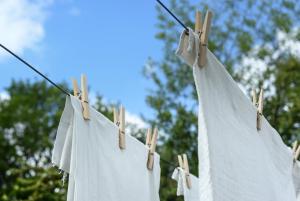- 23 reads

The season of spring cleaning is rapidly approaching, but what about the season of green cleaning? With so many aspects of the environment under attack, it’s important that you don’t just take care of your own personal needs but those of the planet, too.
As the warmer weather approaches and you begin to create your cleaning schedule, it may be a good idea to finally put some time and effort into greenifying your living space as well.
Tips to Green Up Your House
Shopping responsibly and swapping out your plastic recycling or shopping bags for reusable alternatives are all well and good, but if you want to genuinely green up your home, you need to take a deep dive into every aspect of your living space.
Here is a checklist of tips and suggestions for some good places to start your eco-friendly journey towards an environmentally conscious home.
Clean Green
Cleaning is a tricky business. It’s easy to assume that just because you’ve sprayed and wiped down a space, you’ve left it better off, but that isn’t always the case. If you use harsh chemical cleaners, there’s actually a good chance you’re causing more harm than good as you scrub out that bathtub or mop the kitchen floor.
If you’re looking for a way to kill two birds with one stone, consider using environmentally-friendly cleaning choices as you go about your spring cleaning. For instance, use vinegar as your primary house cleaner, create natural air fresheners with an essential oil diffuser, and use baking soda dissolved in warm water as a cleaning scrub.
In addition, hang your laundry out to dry and opt for a front loading washing machine, as they use significantly less water and energy. However, don’t create unnecessary waste by getting rid of a perfectly good unit before it breaks. If you have a top-loading machine, keep using it for the time being but try to use cold water as often as possible.
Audit Your Energy Sources
The energy you use to light your home can be a significant source of waste, especially if your electricity comes from fossil fuels or other unsavory sources. Phantom energy — the energy withdrawn by appliances that are not in use but are still plugged in — is also something to consider when striving to conserve energy. If you’re looking for ways to seriously green up your home, consider investing in some renewable energy sources such as solar, wind, hydro, or biomass electricity and energy alternatives.
If you don’t want to mess with your current setup, you can also look into what your utility company offers. For instance, National Grid has a “GreenUp” program in which they allow their customers to switch to renewable energy that may cost a little bit more but is otherwise delivered to their home in the same exact way as traditional options.
Improve Thoughtfully
When it comes to home improvement projects, it’s easy to let the green element slip to the back burner, but it doesn’t have to be the case.
Contractors are becoming more aware of the environmental impact of their work, and requesting environmentally responsible construction and improvements is more common than it used to be. For instance, Havenly’s Benjamin Moore paints are all VOC free and lumber company Weyerhaeuser is “dedicated to industry leadership in forest stewardship and sustainability.”
The point is, with a little effort, you can often make sustainable choices even with something as big as a home improvement project. In fact, right on GreenandSave, there are multiple resources and tools to gauge the cost and environmental effects of a home improvement project.
Adopt Small Habits
Giant home repairs and solar panel installments aside, you can also make a plethora of smaller eco-friendly decisions in order to help greenify your house this spring. For example, you can:
-
Replace lightbulbs with energy-efficient alternatives and turn off lights when you’re not in a room.
-
Upgrade bathroom and kitchen water fixtures with low-flow options.
-
Ditch paper products and use reusable cloths for napkins, wipes, and handkerchiefs.
There are countless other ways you can cut down on your unsustainable habits, and when you add them up they can make a significant dent in your carbon footprint.
Add Up Those Heating and Cooling Costs
Finally, consider your heating and cooling options. Make sure your heating system is properly cleaned and maintained after the winter, replace your filters on a regular basis, and try to avoid using the AC unless it’s absolutely necessary.
Instead, open windows whenever possible to help ventilate your house. If it’s going to be warm, set an alarm to open windows in the evening and then another alarm to shut them before the temperature spikes in the morning. Hang thicker curtains to help prevent cold or warm air from leaking out and make sure the thermostat is set to a reasonable temperature.
Greening Up This Spring
There are many, many other green choices that can be made, but at the end of the day, the most important thing is that you shift your mindset.
Rather than simply following a checklist and then stopping there, use this list as a starting point, a place from which to leap into a crusade to create a more sustainable, Earth-friendly home. If you can do that, you’ll be able to live a healthier, greener life over the long term.

